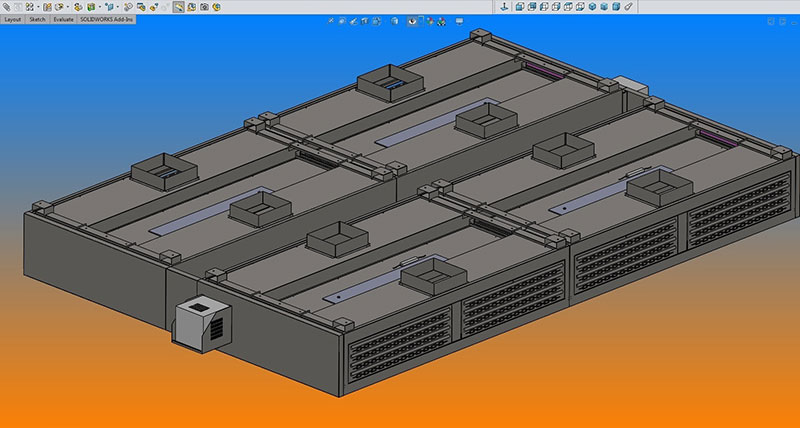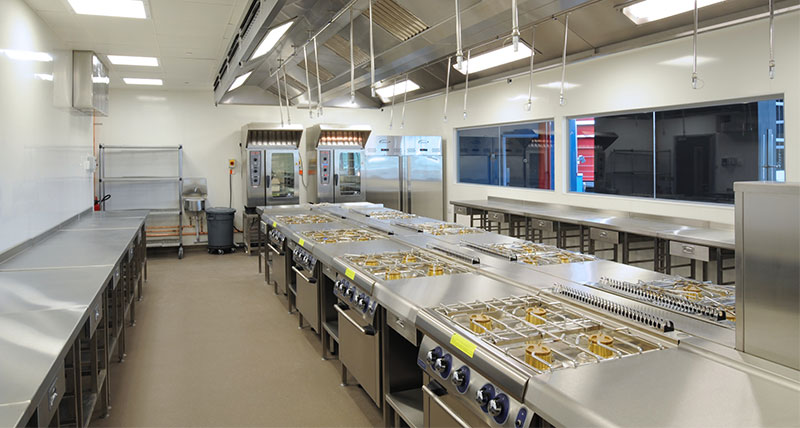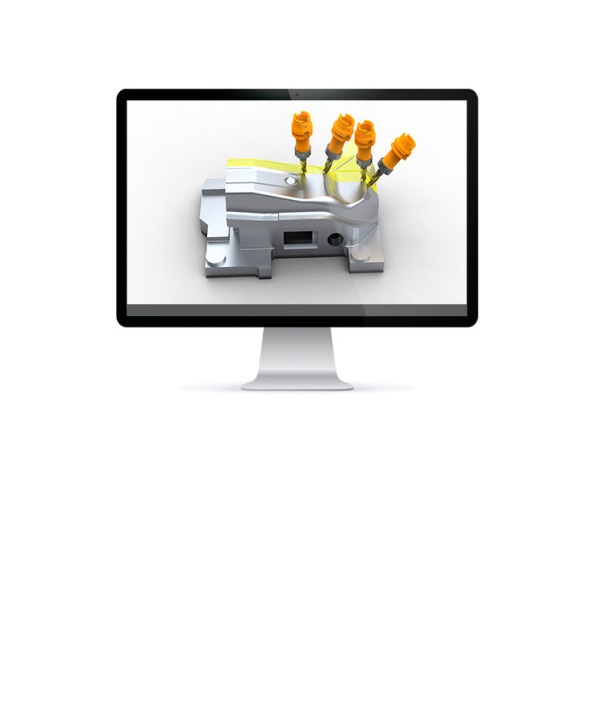Radan macro adds shine to commercial kitchen specialists
Shine Food Machinery - U.K.
Contact us

A bespoke RADAN macro, written specially for a commercial kitchen manufacturer, has overcome a major design issue by completely revolutionising their project nesting.
Shine Food Machinery need the grain flow and top faces on their sheet metal components to be consistent, for the aesthetics of their product. And with the macro, RADAN's powerful project nesting ensures Shine’s unique requirements are met every time.
Neil Thorne, Senior Design Engineer at Shine, describes RADAN as a software that “runs the factory” and is “a vital and integral part of our processes.”

Shine have been trading for over 40 years, delivering in excess of £100 million of commercial catering environments within the last decade. Their vast customer base spans from small cafes and schools, to large £2.5 million contracts with the Ministry of Defence. Shine’s solutions are all delivered in-house from their headquarters in Newport. Projects start with their design team, through to manufacturing and installation.
Neil Thorne explains: “After we’ve won a contract, we’ll design the individual components for the kitchen, such as the extraction systems, tabling and servery counters, in SolidWorks. Once the client approves the design, and site dimensions are taken, we then provide the factory floor with manufacturing drawings. The components are nested, laser cut, folded, welded and assembled. The finished product is then inspected before being delivered to site to meet installation dates.”
With each job being completely bespoke, Shine manufactures thousands of different components a year, each requiring their own CNC code. For example, a full servery counter alone could contain 200 different components. Shine use Radraft, Radprofile and Radnest to accurately and efficiently cut every sheet metal product with a Bystronic Bysprint 3015 3-kW laser. Neil Thorne says: “It’s very important that the parts we manufacture are accurate and within tolerance. Without this, we will encounter problems at our assembly stage. We find RADAN flat patterns and nests the components extremely accurately from SolidWorks.” Steffan Owen, Design Engineer, adds: “Everything’s cut millimetre-perfect and quickly.”
Despite the high level of accuracy and nesting efficiency achieved using RADAN, the company came across an issue resulting from design constraints and human error. “For the aesthetics of our finished installations, we’re governed by grain direction on the sheets. We can’t have neighbouring cabinets with the grain going in different directions…the grain all has to go the same way. This was a problem for us because when the project was going into RADAN, the software was nesting in the best orientation for sheet utilisation, and sometimes we didn’t have the correct top face, and the grain was in the wrong direction. We needed to overcome this without having to nest everything manually.”
After considerable discussions with RADAN Brand Manager Olaf Körner, and RADAN's team of developers, a macro was created specifically for Shine to solve this issue. Olaf Körner says: “As a company, RADAN was challenged by the specific requirements at Shine. The high volume of parts in a project and the high quality materials used, required a highly automated – and at the same time – very reliable process. With input from the engineers at Shine, we put together a specification which allowed us to put a process known as the ‘F-Stop’ in place, that allows Shine to produce the kitchens with a minimal risk of costly errors.”
At the design stage in SolidWorks, a 5mm letter ‘F’ is put on the top face of the panel, which indicates the correct grain direction. Neil Thorne says: “Thanks to the macro, when RADAN is flat patterning it determines from the F-Stop which is the top surface and which way the grain has to go. RADAN then nests with the correct top face and the grain going in the right direction, rather than purely to optimise sheet usage. This is extremely important for the aesthetics of our finished installations. And it stops issues on the factory floor; previously things could be nested either in the wrong orientation or upside down, and even folded the wrong way in the press brake, and had to be scrapped. The amount of scrap we now produce has reduced dramatically.”
Due to the success of the F-stop macro developed for Shine, RADAN are now working to include this feature in a future general release of the software, to benefit all of their customers.
Shine have also seen huge time-saving benefits from the standard features of the software. Neil Thorne says: “From drawing approval from the client to getting our products to site requires a fairly quick turnaround, so as soon as the drawings are approved we need to get it on to the factory floor and manufactured as quickly as possible…and RADAN enables us to do this, taking days off flat patterning for a big contract.” Steffan Owen adds “A school which would have previously taken a few days, has taken just 45 minutes.”
Although the volume of scrappage produced has been largely reduced, RADAN also allows these remnants to be optimised. Steffan Owen explains: “For offcuts, we use the remnants feature. Our scrap used to go in the bin, but now every offcut is put back in the system; and the first thing RADAN does is to look at a remnant first rather than use a new sheet. That way we’re saving on material as well.”
Using the projects and labelling functions have also increased efficiency. “By using projects we know where everything is. The factory floor rely on it a lot…along with the labelling system. All parts are labelled automatically which is really crucial for identifying which components are for what job, what the contract is, and what the item number is.
Previously the labels would be handwritten for every part, which was time consuming – any contract could have well over 1000 individual parts. Now the labels are printed automatically, and our laser operative simply peels them off and puts them on the part, so every part can be readily identified on the factory floor.”
The increase in efficiency and production rate in the cutting operation has introduced a need for further investment in the factory to stop a current bottleneck at the bending stage. Shine will shortly be commissioning a third press brake to fully benefit from the increasingly fast rate that the flat components are coming off the laser.
In summary, Neil Thorne says: “RADAN runs the factory. It’s a vital and integral part of our process. It cuts down the amount of time we spend nesting, especially with the F-stop macro. Everything’s organised and easy to identify with the labelling system, which is vital to us as many contracts are run with thousands of components. With Radan we are benefiting from fast production, accuracy and saving on materials from the reduction in errors and optimisation of remnants.”
